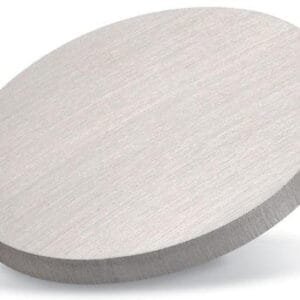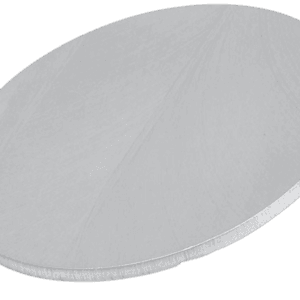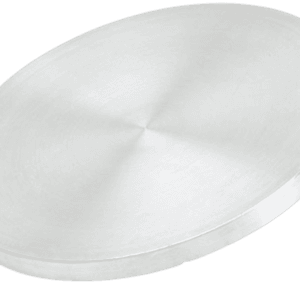Titanium Pentoxide Sputtering Target Description
Titanium Pentoxide sputtering target, supplied by TFM, is a high-purity oxide sputtering material composed of the compound Ti3O5. This material is characterized by its unique dark blue to black appearance and is widely used in various thin film deposition processes, particularly in industries that require precise and reliable thin films for electronic and optical applications.
Related Product: Titanium Sputtering Target
Titanium Pentoxide (Ti3O5) Overview:
Origin: Titanium Pentoxide is a compound composed of titanium and oxygen. The name “titanium” is derived from the Titans of Greek mythology, symbolizing strength. The term “oxygen” comes from the Greek words ‘oxy’ and ‘genes’, meaning “acid-forming.”
Properties: Titanium Pentoxide, or Ti3O5, has a high melting point of approximately 1800°C and a density of 4.2 g/cm³. This compound is notable for its optical properties, including a wide transparency range and a high refractive index, making it ideal for use in various optical applications, such as coatings and thin films.
Titanium Pentoxide Sputtering Target Specification
| Compound Formula | Ti3O5 |
|---|---|
| Molecular Weight | 223.598 |
| Appearance | Black blue powder |
| Melting Point | 1800 °C |
| Density | 4.2 g/cm3 |
| Available Sizes | Dia.: 1.0″, 2.0″, 3.0″, 4.0″, 5.0″, 6.0″ Thick: 0.125″, 0.250″ |
Titanium Pentoxide Sputtering Target Application
Optical Coatings: Titanium Pentoxide is ideal for anti-reflective (AR) coatings, beam splitters, and cold light coating filters, enhancing the performance and durability of optical systems by reducing glare and improving light transmission.
High-Resolution Devices: This material is used in coatings for glasses and other high-precision optical components, contributing to high-resolution imaging and precise light control in advanced optical devices.
Titanium Pentoxide Sputtering Target Packaging
Each Titanium Pentoxide Sputtering Target is meticulously handled and packaged to ensure its quality and purity. We employ standard packaging procedures that include vacuum sealing the target in a clean environment. This method prevents contamination and safeguards the product during transportation, ensuring that it reaches the end-user in optimal condition.
Frequently Asked Questions (FAQs)
Q1: What are the main applications of Titanium Pentoxide in coatings?
A1: Titanium Pentoxide is widely used in optical coatings such as anti-reflective (AR) coatings, beam splitters, and cold light coating filters. It is also ideal for high-reflection (HR) coatings and glasses coatings, thanks to its broad transparency range and high refractive index.
Q2: Can I order custom dimensions for Titanium Pentoxide sputtering targets?
A2: Yes, we offer Titanium Pentoxide sputtering targets in various forms and sizes. Custom dimensions can be fabricated to meet specific customer requirements.
Q3: How do you ensure the purity and quality of your sputtering targets?
A3: Our Titanium Pentoxide targets are produced under stringent quality control procedures to ensure a purity level of over 99.9%. We conduct thorough testing to verify the material’s quality, ensuring it meets the highest standards.
Q4: What kind of support does TFM offer for clients using sputtering targets?
A4: We provide extensive technical support, including detailed product data sheets and expert consultation. This helps our clients choose the right materials for their specific applications, ensuring optimal results.
Q5: What are the benefits of using high-purity Titanium Pentoxide sputtering targets?
A5: Using high-purity targets reduces the risk of contaminants in thin films, thereby improving the performance and reliability of coated components. This is particularly important in sensitive optical applications.
Q6: How is Titanium Pentoxide packaged for shipping?
A6: Titanium Pentoxide sputtering targets are vacuum-sealed in a clean environment to protect against air and moisture exposure. For bulk orders, additional protective measures are taken to ensure the product arrives in excellent condition.





Reviews
There are no reviews yet.